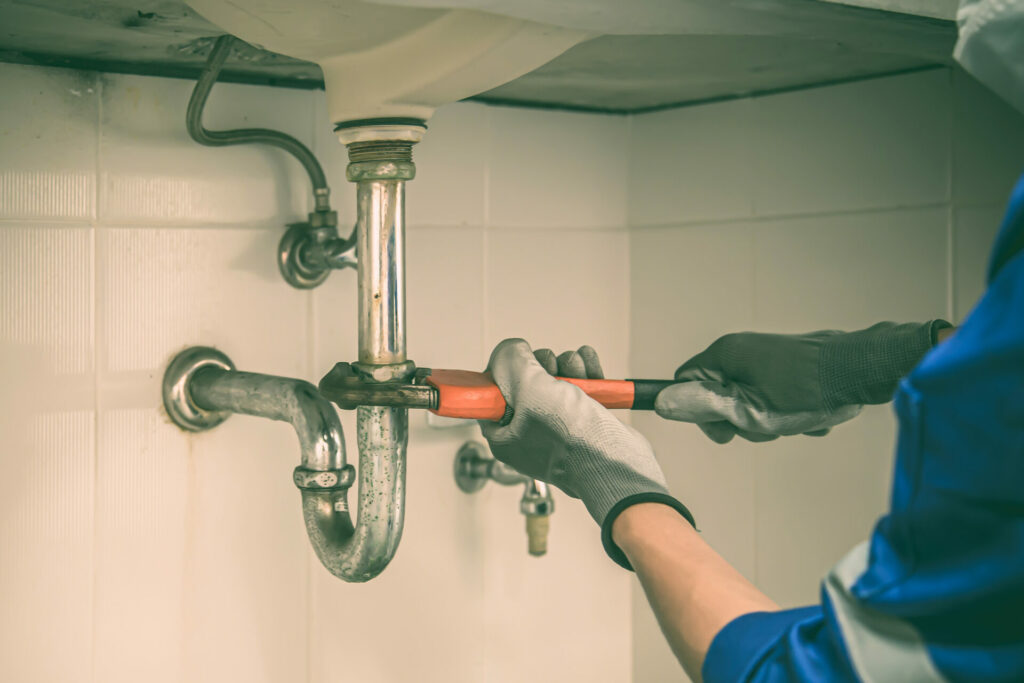Have you ever found yourself in a situation where your water heater suddenly stopped working, leaving you in the cold? Coincidences like these can be frustrating, but fear not! In this discussion, we will provide you with four essential tips for water heater installation that will ensure your hot water needs are met efficiently and safely.
So, whether you’re a homeowner looking to replace an old unit or a DIY enthusiast ready to tackle a new project, keep reading to discover the key factors to consider for a successful installation.
Water Heater Installation – Key Takeaways
- Properly sizing the water heater based on household size, number of bathrooms, and hot water usage is essential for efficiency and to avoid wasting energy.
- Location and ventilation considerations are crucial for safe water heater installation, including choosing a well-ventilated area away from combustible materials and following local building codes.
- Safety precautions should be followed during installation, such as wearing appropriate safety equipment, turning off the power supply, and securely mounting the water heater.
- Regular maintenance and troubleshooting, including adjusting thermostat settings, checking for leaks, and addressing them promptly, can help ensure the proper functioning of the water heater.
Proper Sizing for Efficiency
To ensure optimal efficiency, it’s crucial to properly size your water heater. Choosing the right water heater capacity is essential for meeting your household’s hot water needs while minimizing energy consumption. When it comes to water heater installation, bigger isn’t always better.
Determining the correct water heater capacity depends on various factors, such as the size of your household, the number of bathrooms, and your typical hot water usage. A water heater that’s too small may not provide enough hot water, leading to constant frustration and discomfort. On the other hand, a water heater that’s too large will result in wasted energy and higher utility bills.
To find the ideal water heater capacity for your home, it’s recommended to consult with a professional plumber or refer to the manufacturer’s guidelines. They’ll consider your household’s specific needs and recommend a water heater that can efficiently meet your hot water demands.
Properly sizing your water heater not only ensures that you have enough hot water but also helps to optimize energy consumption. By selecting the right capacity, you can avoid unnecessary energy wastage and reduce your carbon footprint. This won’t only benefit the environment but also contribute to lower utility bills, saving you money in the long run.
Location and Ventilation Considerations
When installing your water heater, it is important to consider the location and ventilation requirements to ensure safe and efficient operation. Proper venting and adherence to safety regulations are crucial to prevent the buildup of harmful gases and potential hazards. Here are some key considerations for the location and ventilation of your water heater:
| Location Considerations | Ventilation Considerations | Safety Regulations |
|---|---|---|
| – Choose a well-ventilated area away from combustible materials such as gasoline or paint. | – Ensure proper venting to remove combustion byproducts and prevent the accumulation of carbon monoxide. | – Follow local building codes and regulations for the installation of water heaters. |
| – Keep the water heater accessible for maintenance and repairs. | – Install a vent pipe that extends to the outdoors, preferably through the roof. | – Use approved vent materials that can withstand high temperatures. |
| – Consider the proximity to plumbing connections for easy installation. | – Check the venting system regularly for blockages or damage. | – Install a carbon monoxide detector near the water heater for added safety. |
| – Protect the water heater from extreme temperatures and weather conditions. | – Ensure that the vent pipe has the correct size and slope for efficient airflow. | – Keep the area around the water heater clear of flammable materials. |
| – Install the water heater on a stable and level surface to prevent accidents. | – Avoid terminating the vent near windows, doors, or air intakes to prevent the entry of exhaust gases. | – Hire a licensed professional for the installation if required by local regulations. |
Installation Safety Precautions
Make sure to take necessary safety precautions during the installation of your water heater to ensure a smooth and secure process. By following these safety measures, you can protect yourself and your loved ones from potential accidents or injuries.
Here are some essential safety precautions to keep in mind:
- Wear appropriate safety equipment: Prioritize your safety by wearing protective gear such as gloves, goggles, and closed-toe shoes. This will shield you from any potential hazards during the installation process.
- Turn off the power: Before starting the installation, make sure to turn off the power supply to the area where you’ll be working. This will prevent any electrical mishaps and ensure your safety.
- Follow electrical requirements: Familiarize yourself with the electrical requirements for your water heater. Ensure that you have the correct voltage and wiring to avoid any electrical issues or malfunctions.
- Securely mount the water heater: Properly secure the water heater to prevent it from tipping over or causing damage. Use sturdy brackets or straps to ensure a firm and stable installation.
- Check for leaks: After the installation is complete, thoroughly check for any leaks. A leak can lead to water damage and potential hazards, so it’s crucial to address them immediately.
Maintenance and Troubleshooting Tips
Regular maintenance and troubleshooting are essential for ensuring the optimal performance and longevity of your water heater. By taking the time to properly care for your water heater, you can avoid common problems and ensure that it operates efficiently, saving you energy and money in the long run.
One of the most common problems with water heaters is a lack of hot water. If you find that your water isn’t getting hot enough or runs out quickly, check the thermostat settings. Sometimes, the thermostat may have been accidentally turned down or set too low. Adjusting it to the appropriate temperature should solve the issue. If the problem persists, there may be a faulty heating element that needs to be replaced.
Another common issue is a leaking water heater. Leaks can be caused by a variety of reasons, such as a loose connection or a faulty valve. Start by checking all the connections to ensure they’re tight and secure. If you find a leak, it’s important to address it promptly to prevent further damage. If the leak is coming from the tank itself, it may be time to consider replacing the water heater.
To save energy and reduce your utility bills, there are a few simple tips you can follow. Insulating your water heater and pipes can help minimize heat loss and keep the water hot for longer periods. Additionally, setting the thermostat to a lower temperature, such as 120 degrees Fahrenheit, can also save energy. Finally, consider installing a timer or scheduling your water heater to operate during off-peak hours when electricity rates are lower.
Review
By following these essential tips for water heater installation, you can ensure efficient and safe operation of your system.
Proper sizing, considering location and ventilation, taking safety precautions during installation, and regular maintenance will help extend the lifespan of your water heater and prevent potential issues.
Remember to consult a professional if you encounter any troubleshooting problems.
Enjoy reliable and hot water for all your needs!

